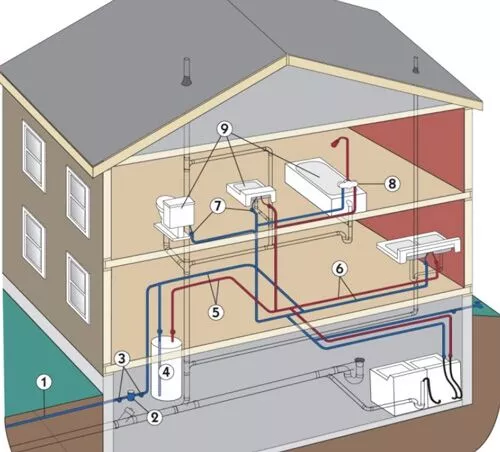Your Home Plumbing Systems

Your home plumbing systems are a vital part of keeping your home running efficiently and safely. They contain a complex network of pipes, fixtures, drains, valves, vents, and water storage tanks.
Having a basic understanding of how your plumbing system works can help you diagnose and repair issues. Knowing when to call in a professional is also important.
Water Supply
Plumbing systems run water throughout your home and provide a safe and reliable supply of clean drinking water. A system of pipes, fittings and valves transports water from the city main to your house, ensuring you get the right amount of water each time you turn on the faucet.
Your plumbing system also has a pressure regulator to ensure the water coming into your home isn’t under so much pressure that it damages your pipes. This is important because it prevents problems like water hammer, which could burst open the piping.
The water that flows through your home comes from the city’s municipal water system, which sends pressurized, treated water to your home through the water main. The water then flows through a buried supply line to your house, where it connects to your water heater.
Fixtures
The plumbing fixtures in your home play a crucial role in delivering water for different purposes, including cooking and showering. They come in a variety of styles and shapes, which is why they are so important to choose wisely.
Plumbing fixtures include toilets, sinks, faucets, and showers. They all serve a specific function and have a fixed lifespan.
Old and worn-out fixtures are more prone to unexpected failures, leading to expensive repairs. Replacing outdated fixtures with new ones is a smart investment that pays for itself in the long run.
Whether you’re remodeling your bathroom or installing a new fixture in a newly-built home, it’s essential to know what to look for.
New water-saving fixtures can lower your water bill by regulating water flow and optimizing pressure to avoid overconsuming. They also help keep your household more energy efficient and reduce the stress on your appliances. In addition, they make your home stand out in the real estate market and boost its value.
Drains
Your home plumbing systems bring clean water into your house and take wastewater out. They are separate and do not overlap.
Drains are the downward angled pipes that carry waste away from fixtures, like sinks and showers. These pipes rely on gravity to send waste to the sewer line beneath your home.
Typically, they are about 1 1/4 inch wide for bathrooms and kitchen sinks, with larger branch drain lines that connect to main drain pipes.
They also have vents that stick up from the roof of your house to allow air to enter the drainage pipes and keep them open so wastewater can flow properly.
Besides being a place where waste can be flushed, drains are also responsible for trapping sewer gases that would otherwise rise from the sewage system to your home and cause foul smells. These gasses can be dangerous, as they can cause headaches, nausea and dizziness when you breathe them in.
Vents
Vents allow water to drain and sewer gases to escape. They also regulate air pressure inside your plumbing pipes to keep them working efficiently and safely.
A clogged vent pipe or stack can cause negative pressure in your plumbing system, which causes problems like slow drainage and gurgling noises from your drains. It can also prevent sewer gases from escaping and odors from entering your home.
When planning a new home or remodeling your existing one, you’ll need to plan where the vents will go and how to connect them. Identifying the proper vent type will help prevent problems in the future, such as clogged drains or smelly sewage.
There are a few types of vents, including air admittance valves (AAVs) and Studor vents. You’ll need to work with an MEP engineer who will determine the best location for the vents and how to connect them to the rest of your plumbing.




Leave a Reply